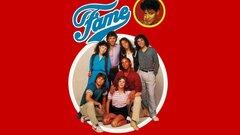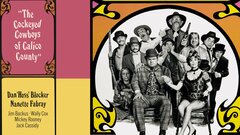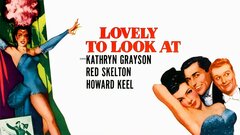A celebrated dancer, actress, and choreographer of stage, screen, and TV, Marge Champion, together with her then-husband and partner Gower Champion, excelled at the "story dance," a combination of dance and pantomime, which they performed to great renown on Broadway, in several films, and on such TV programs as "The Broadway Admiral Revue" (NBC, 1949).
Champion was the daughter of Ernest Belcher, a ballet coach for Hollywood stars. In 1936, she performed with the Los Angeles Civic Opera in several productions, often before as many as 23,000 people. Soon thereafter, she was a human figure model for the heroine of Disney's animated "Snow White and the Seven Dwarfs" (1937), and later modeled for the blue fairy in "Pinocchio" (1940). Then known as Marjorie Bell, she also made her film debut in "The Story of Vernon and Irene Castle" (1939), although it was Ginger Rogers who danced with Fred Astaire.
Champion was keeping busy, but her career did not pick up steam until she moved to New York in 1945. She became reacquainted with Gower Champion, with whom she had attended Bancroft Junior High School in Hollywood. The duo appeared in the 1945 show, "Dark of the Moon," and also worked up a nightclub act.
In 1947, they married and their "Gower & Bell" team became known as Marge and Gower Champion. They performed with Sid Caesar and Imogene Coca on TV's "The Admiral Broadway Revue," but when the comics went on to do "Your Show of Shows," the Champions returned to Hollywood. There they performed in several musicals at MGM, principally a lavish color remake of "Show Boat" (1951), in which they played second bananas Ellie and Frank.
The Champions played leads in the agreeable "Everything I Have is Yours" (1952) and "Give a Girl a Break" (1953) and supporting roles in films including "Jupiter's Darling" (1955), but they were never top stars and MGM released them from their contract. Among the reasons the Champions left Hollywood was because they had insisted on the right to do TV. And so the duo appeared in "Three for Tonight," a 1955 CBS special, and tried their own CBS sitcom in 1957, "The Marge & Gower Champion Show," in which they were dancers trying to establish a new life.
As their style was considered "sophisticated," it easily lent itself to several somewhat highbrow specials such as "Accent of Love" and "Marriage - Handle With Care" (both 1959).
Marge also began acting solo in straight dramatic roles, sometimes on the light side, such as the Peter Sellers comedy "The Party" (1968) or Frank Perry's thoughtful study of middle age, "The Swimmer" (1968).
Marge and Gower Champion divorced in 1973, but Marge, on her own, choreographed the feature film "The Day of the Locusts" (1973) and won an Emmy for creating the dances for the celebrated TV-movie "Queen of the Stardust Ballroom" (CBS, 1975), the story of a widow (Maureen Stapleton) who finds a new lease on life at a ballroom dance hall.
In 1977, she married director Boris Sagal and began working with him on several of his TV projects. She did the choreography for the miniseries "Ike" (ABC, 1979) and was dialogue coach for the miniseries "Masada" (ABC, 1981).
When Sagal was killed in a tragic accident while on location in 1981, Champion curtailed her activities. But she appeared on "Harry Belafonte: Don't Stop the Carnival," a 1988 HBO special reuniting her with a performer with whom she had appeared on TV in the late '50s.
Champion, often billed since the late '70s as Champion Sagal, was also a consultant for the 1987 PBS documentary "Agnes: The Indomitable De Mille," and, in 1988, choreographed a show for the Berkshire Theatre Festival in Massachusetts.































































